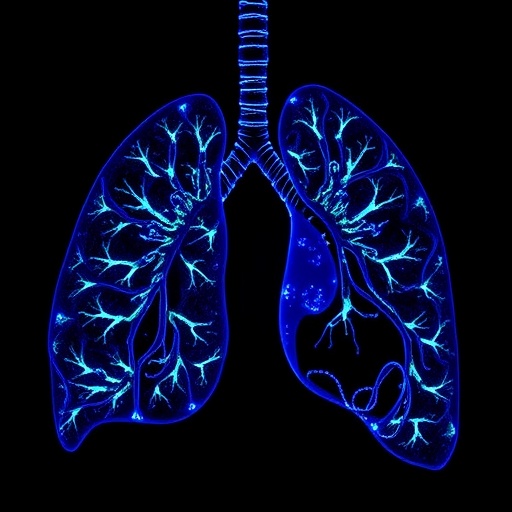April 4, 2018 – For children with severe cerebral palsy (CP), surgery for scoliosis (sideways curvature of the spine) significantly improves the quality of life (QoL) for them and their caregivers, reports a study in the April 4, 2018, issue of The Journal of Bone & Joint Surgery. The journal is published in partnership with Wolters Kluwer.
"Scoliosis surgery in patients with CP leads to a significant improvement in health-related QoL, which is maintained five years following surgery," write Firoz Miyanji, MD, of British Columbia Children's Hospital, Vancouver, and colleagues from seven other North American medical centers. Their study provides evidence that surgery for scoliosis improves outcomes important to severely disabled children with CP and their parents/caregivers–outweighing the substantial rate of complications during the first year after surgery.
Scoliosis Surgery Improves Quality of Life for Kids with Severe CP The study included 69 children with CP who underwent spinal fusion surgery for scoliosis between 2008 and 2011, identified from an international database. The children all had at least five years' follow-up up data; average age at the time of scoliosis surgery was about 13 years.
All of the children were severely disabled due to CP: most were in level V of the standard five-level Gross Motor Function Classification System. Up to 35 percent of children in levels IV and V will develop progressive scoliosis that cannot be controlled by wearing a brace. The abnormal spinal curvature causes a wide range of problems, including inability to balance in a seated position, pain, and possibly long-term adverse effects on lung, heart, and gastrointestinal function.
Surgery may be performed to stop scoliosis progression. However, the true benefits of surgery in improving QoL are difficult to quantify in these complex cases. Dr. Miyanji and colleagues used a validated questionnaire specifically designed for evaluation of children with severe CP–the Caregiver Priorities and Child Health Index of Life with Disabilities, or "CPCHILD"–to assess the impact of scoliosis surgery at one, two, and five years postoperatively.
Scoliosis surgery significantly reduced the spinal curvature. On a standard x-ray measurement (Cobb angle), the curve was reduced from the severe to the mild-to-moderate range, on average. The improvement remained stable through two and five years after surgery.
Analysis of the CPCHILD scores showed improvements QoL for the patients with CP and their caregivers. In addition to improvement in the total CPCHILD score, there were improvements in the areas of personal care, positioning, and comfort. Overall, 92 percent of caregivers reported that their child's QoL was better one year after scoliosis surgery. Like the x-ray improvements, the gains in QoL persisted throughout follow-up.
As in previous studies of scoliosis surgery in children with CP, complications were common. This was especially so during the first year after surgery, when 46 percent of patients experienced a complication, most commonly pneumonia and surgical site infections. However, the first-year complications had little or no impact on QoL outcomes.
Surgery has been regarded as the standard of care for children with severe CP and scoliosis that cannot be controlled by bracing or seating modifications. However, the true benefits of scoliosis surgery–especially in terms of "patient-centered outcomes" important to the children and their caregivers–have been debated.
Some researchers have questioned the long-term benefits of scoliosis surgery in this group of patients–especially considering the substantial risk of complications. "We are encouraged that the results of this multi-center study will provide patients, caregivers, and treating surgeons some guidance when faced with the decision of moving ahead with surgery," says Dr. Miyanji.
"I am pleased to see that the data could provide useful information which helps patients with CP and their parents make good decisions," comments Dr. Paul Sponseller, a coauthor of the study. "These families place an enormous amount of trust in our recommendations and this helps to give the advice a more solid basis, which they deserve."
###
Click here to read "Assessing the Risk-Benefit Ratio of Scoliosis Surgery in Cerebral Palsy Surgery: Is Worth It."
DOI: 10.2106/JBJS.17.00621
About The Journal of Bone & Joint Surgery
The Journal of Bone & Joint Surgery (JBJS) has been the most valued source of information for orthopaedic surgeons and researchers for over 125 years and is the gold standard in peer-reviewed scientific information in the field. A core journal and essential reading for general as well as specialist orthopaedic surgeons worldwide, The Journal publishes evidence-based research to enhance the quality of care for orthopaedic patients. Standards of excellence and high quality are maintained in everything we do, from the science of the content published to the customer service we provide. JBJS is an independent, non-profit journal.
About Wolters Kluwer
Wolters Kluwer is a global leader in professional information, software solutions, and services for the health, tax & accounting, finance, risk & compliance, and legal sectors. We help our customers make critical decisions every day by providing expert solutions that combine deep domain knowledge with specialized technology and services.
Wolters Kluwer, headquartered in the Netherlands, reported 2017 annual revenues of €4.4 billion. The company serves customers in over 180 countries, maintains operations in over 40 countries, and employs approximately 19,000 people worldwide.
Wolters Kluwer Health is a leading global provider of trusted clinical technology and evidence-based solutions that engage clinicians, patients, researchers and students with advanced clinical decision support, learning and research and clinical intelligence. For more information about our solutions, visit http://healthclarity.wolterskluwer.com and follow us on LinkedIn and Twitter @WKHealth.
Media Contact
Connie Hughes
[email protected]
646-674-6348
@WKHealth
http://www.lww.com




